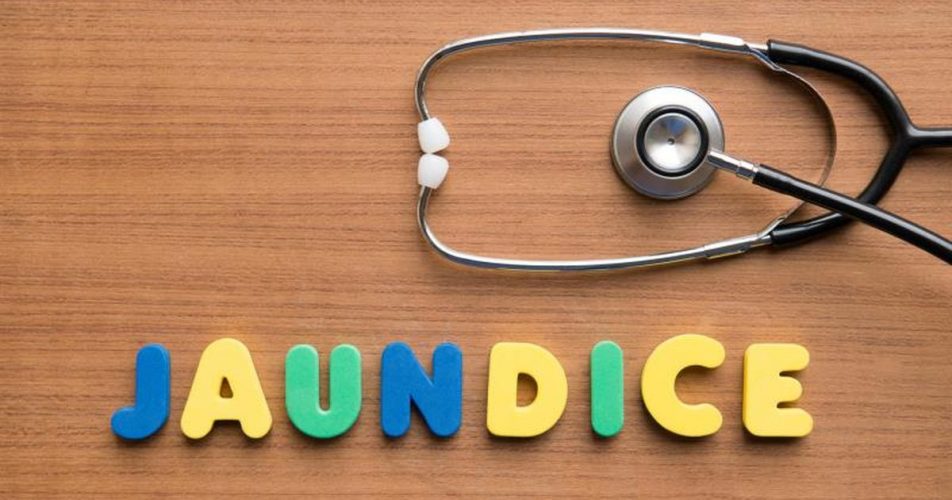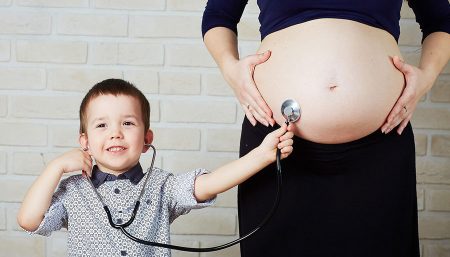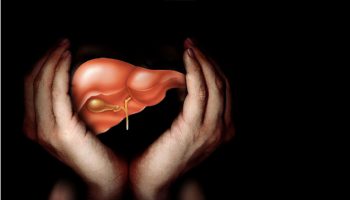
Build-up of bilirubin in the blood and body’s tissues leads to yellowing of the skin and white of the eyes. Bilirubin is nothing but, a yellow waste substance found in bile, the liquid the liver makes to help break down fats. When there is too much bilirubin in the bloodstream, it may leach into surrounding tissues like skin and eye tissues, causing them to yellow.
It is often seen in the sclera, iris, and eyelid. It has different causes in adults, children, and newborns.
Signs of Jaundice
The most common signs are:
- Yellowing of the skin, eyes and the lining of the inside of parts of the body, such as the mouth and nose (mucus membrane)
- Pale-coloured stools
- Dark-coloured urine
Jaundice in Newborn
In case of a newborn, the liver is still maturing. In such case Bilirubin often builds up faster than a newborn’s immature liver can break it down, causing jaundice to occur frequently.

Normal newborn jaundice causes include:
- Physiological jaundice: Many newborns have this type of jaundice, due to the newborn’s still-developing liver. It normally appears when a baby is 2 to 4 days old.
- Breastfeeding: Breastfeeding can cause jaundice when a baby isn’t getting enough breast milk to flush the bilirubin out. This type often resolves when a mother’s milk comes in.
- Breast milk: Occasionally, substances in breast milk cause a baby’s intestines to hold onto bilirubin rather than pass it through stool. This form normally resolves itself by 12 weeks.
Causes of yellow eyes in older children and adults
Unlike yellow skin, which may be from eating too many yellow and orange vegetables, yellow eyes are nearly always a sign of jaundice. Yellow eyes and jaundice in older children and adults normally indicate an underlying medical issue.
There are three main reasons for jaundice to occur:
- Liver disease or liver injury: Liver problems cause a type known as hepatocellular jaundice.
- Breakdown of red blood cells: When red blood cells are broken down too quickly, there is an increase in bilirubin production.
- A blockage in the bile duct system: When the tubes that carry the bile from the liver to the gallbladder and intestines get blocked, bilirubin can’t leave the liver and builds up excessively. This type is called obstruction jaundice.

Treatment & Care
Treatment to address this particular condition includes,
- Treatment may consist of expectant management (watchful waiting) at home with rest.
- Medical treatment with intravenous fluids, medications, antibiotics, or blood transfusions may be required.
- If a drug/toxin is the cause, these must be discontinued.
- In certain cases of newborn jaundice, exposing the baby to special colored lights (phototherapy) or exchange blood transfusions may be required to decrease elevated bilirubin levels.Other Treatment Tips,
- Maintain adequate hydration by drinking fluids, and rest as needed.
- Take medications only as instructed and prescribed by a health care practitioner.
- Avoid medications, herbs, or supplements which may cause detrimental side effects. Consult a health care practitioner for advice.
- Avoid drinking alcohol until the patient has discussed it with their healthcare professional.
- Certain dietary restrictions may be recommended by a health care practitioner.
- In certain cases of newborn jaundice, the parents or caregivers can place the baby next to a well lit window a few times a day to decrease elevated bilirubin levels. In more severe cases, a health care practitioner may need to discharge the baby home from the hospital with home phototherapy.
- Provide adequate milk intake for the baby in cases of breastfeeding.
If symptoms worsen or if any new symptoms arise, consult a health care practitioner.
All sudden cases of jaundice in adults and older children should be looked at by a physician to rule out serious causes.
Disclaimer
The Content is not intended to be a substitute for professional medical advice, diagnosis, or treatment. Always seek the advice of your physician or other qualified health provider with any questions you may have regarding a medical condition.



